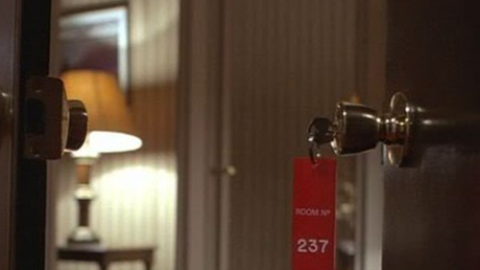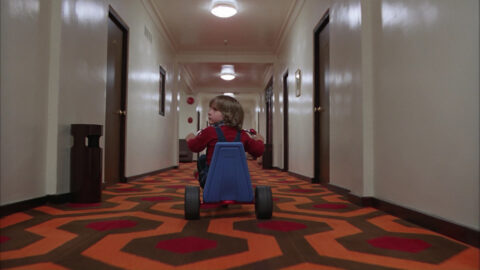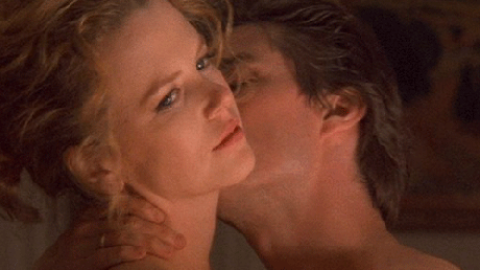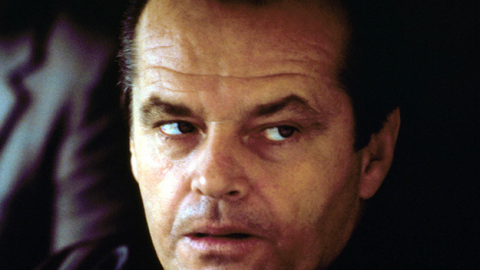Queer & Now & Then: 1980
In this biweekly column, I look back through a century of cinema for traces of queerness, whether in plain sight or under the surface. Read the introductory essay.
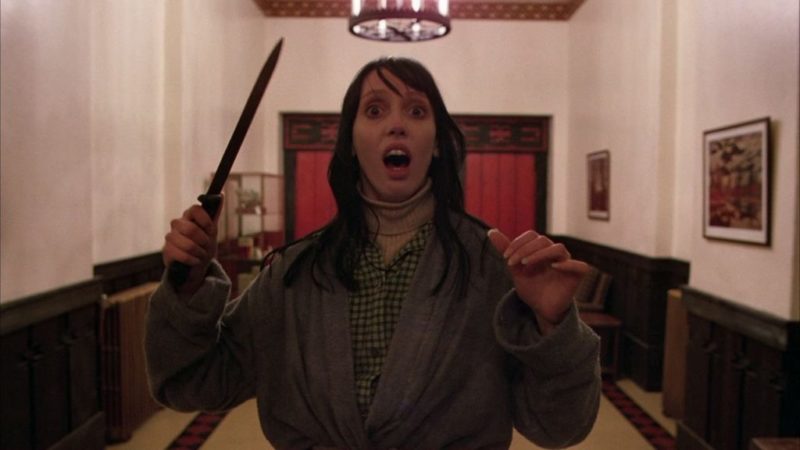
Since the history of cinema as we know and write about it has been almost exclusively a staunchly heterosexual (and white and male) one, watchers of capital-C classics have long had to look in the margins and crevices for signs of queer life. The major players of American auteur cinema in particular—those artists whose names invoke entire, self-contained universes of cinematic feeling and imagery, like Hitchcock, Scorsese, Terrence Malick, Francis Ford Coppola, Spike Lee, Tarantino, the Andersons—have been demonstrably disinterested in exploring gay characters in any significant way. Since their ever-present filmographies have long eclipsed the careers of so many others, this is hardly negligible in terms of writing any kind of mainstream gay film history. Those rare times when iconic directors have featured queer characters in non-villainous central roles are remarkable to the point of abstraction—John Huston’s Reflections in a Golden Eye, Steven Spielberg’s The Color Purple, and David Lynch’s Mulholland Drive are but three examples. And it probably goes without saying that in each of those cases, the homosexuality of the character becomes a touch point of the plot rather than incidental, an expression of some psychosexual motivation. To briskly simplify three complex films: Reflections’ Major Penderton (Marlon Brando) is tortured by suppressed gay urges; The Color Purple’s Celie (Whoopi Goldberg) finds solace in the arms of Shug Avery, it is implied, partly in response to a world of monstrous, abusive men; and the devouring, vengeful lesbianism of Mulholland’s Diane/Betty (Naomi Watts) plays as a sort of narrative and character doubling effect, an idea of the splitting of the self that has more foundation in Freudian split consciousness than sexual experience.
The incidental nature of queerness is something that American cinema has never been able to reckon with, but then again so little is incidental in a movie, in which everything functions as a signifier of some sort: it’s all there for a reason, they say. Which brings us to the legendarily meticulous Stanley Kubrick, the ultimate conceptual American filmmaker; he’s so monolithic in the culture that his most lasting cinematic image is literally a monolith. The cinema of Kubrick is hard, masculine, unyielding—but if looked at through a different light, it’s also the opposite of all these things. A man of strict modernist cinematic principles, Kubrick also was constantly undermining his own strategies, slyly destabilizing viewers. One way he did this early on was by smuggling in satirical sexual imagery, from the suggestive food metaphors in Lolita (1962) to those phallic B-52 bombers lustily commingling in the opening of Dr. Strangelove (1964).
Yet Kubrick’s career is also dotted with implied instances of queerness that momentarily break through his tightly controlled, austere frames and quite purposely disrupt his films’ heteronormative narrative flow. Most overtly there is the homoerotic bathing scene in Spartacus (1960), in which Laurence Olivier’s Crassus tells Tony Curtis’s slave Antoninus that he has a taste for both “snails” and “oysters.” There’s also A Clockwork Orange (1971), in which Alex’s lecherous, vengeful truant officer, Mr. Deltoid, lays hands on our antihero’s tighty-whities-clad crotch in a way that’s more than merely punishing. Perhaps most provocatively, there is the brief but memorable moment in Barry Lyndon (1975) in which Barry stumbles upon two soldiers in a pond, naked and holding hands, professing love for each other: “It’s times like this I realize how much I care for you, and how impossibly empty life would be without you.” Barry, eavesdropping on them from a distance, seizes the moment to abscond with the clothes of one of the men and steal his identity; yet the humor doesn’t necessarily feel at the expense of the lovers—there’s something bracing about the inclusion at all, a forthright declaration that same-sex love existed at this or any point in history, when cinema (and procreation-minded history itself) has long denied that fact. It’s the incidental nature of it all that is striking. The scene goes no further than this: the characters disappear, but the expression of true love lingers, however comically depicted, especially because this is a film in which romance and marriage will prove little more than opportunistic transactions.
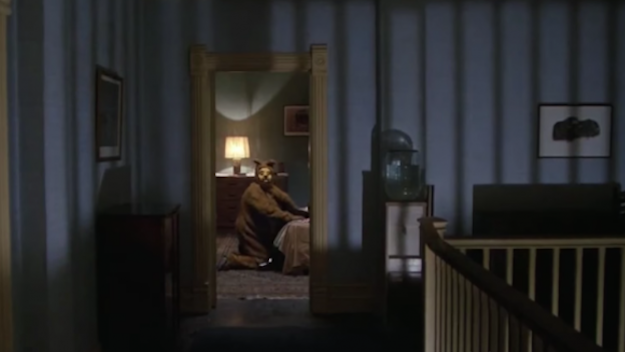
With all this in mind, how do we contextualize that unforgettable, startling moment in The Shining that stands as perhaps the queerest in all of Kubrick’s cinema? You know the one: it’s that shot near the climax of the film, in which something is happening in that room upstairs. At this point, Shelley Duvall’s Wendy—heretofore unable to witness any ghosts in the Overlook because she is evidently not cursed with the “shining,” like son Danny and husband Jack—is somehow now able to see the hotel’s demons as they stir from their slumber. Frantically searching the hallways for Danny, who’s being stalked by her murderous, possessed husband, the terrified Wendy stumbles upon something very, very wrong. After reaching the top of one of the cavernous building’s many staircases, she notices an open door to one of the rooms, all of which have presumably been unoccupied during their long winter caretaking. Wendy’s face registers panic and open-mouthed shock; Kubrick cuts to a reverse shot of what she’s looking at. At first it’s difficult to make out, intentionally so; rather than surprise we’re indicated to feel confusion. From a remove, framed by the open door, we see what looks like a human figure in some sort of animal costume kneeling on the floor and leaning over the side of a bed; a flap in the outfit’s backside is wide open, leaving its bare ass exposed. As though it’s suddenly aware it’s being watched, the hulking figure, now clearly male, slowly leans back into the space of the doorframe. Its head, turned towards Wendy, is covered with a bear mask. Another man, this one undisguised, also leans forward, and it’s now evident the bear-man’s face was buried in the other man’s crotch. As the two figures curiously gaze back at Wendy—and us—the camera crash-zooms into them. A stricken Wendy, knife waving from her comically bad grip, dashes off.
The effect is absurdly terrifying at first blush, and terrifyingly absurd the more times you watch the movie. It’s so unmotivated that it’s on the knife-edge of funny. Yet it’s also indicative of a sudden reversal of power: we, and Wendy, have become the intruders on these ghouls’ playtime. The hotel is clearly theirs.
The moment barely lasts more than 20 seconds, yet this instant has been puzzled over, laughed about, and debated for years—when not ignored. Not even the obsessively detailed documentary Room 237 dared go there. In Alexander Walker, Sybil Taylor, and Ulrich Ruchti’s book Stanley Kubrick, Director: A Visual Analysis, it rates only this mention: “A zoom shot of a couple of ghostly revenants, one of them dressed as a bear and apparently fellating the other . . . is more perplexing than scary. It could have been excised, or exorcised, too, without loss.” This is quite a casual dismissal in a book that otherwise pores over each detail. Since most would agree that there are few accidents or even casually considered images in a Kubrick film, one should assume this scene is more than just a gag about horny ghosts. Wendy’s horror at seeing this—not just seeing these beings who shouldn’t be there, but witnessing their sexual act—functions almost like a primal scene. It’s not incidental that these are the first phantoms she encounters: it’s an unleashing of transgressive forces just barely repressed beneath the veneer of the Torrances’ far less than perfect unit.
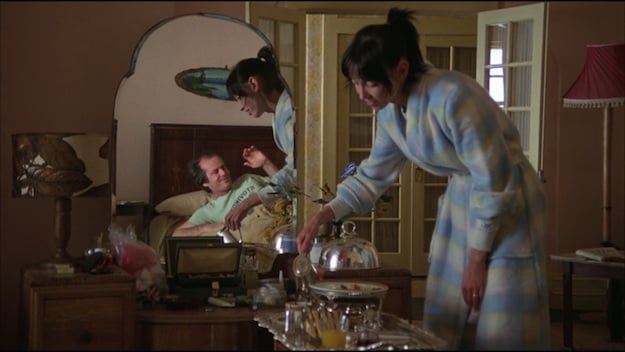
Some have traced back these nameless characters to a passage in Stephen King’s original source novel describing a prior Overlook owner’s sadomasochistic relationship with a guest wearing a dog costume. Of course, to attribute Kubrick’s motivations to universe building with the King novel, which he largely disregarded, feels foolish. What seems most important about this man-beast coupling is not what it could possibly mean, but that it just shouldn’t be there at all. Kubrick’s families are almost uniformly troubled: perverse (the grotesque stepfathers in Lolita and Barry Lyndon), separated (Heywood Floyd’s long-distance proto-Skype session with his little daughter in 2001: A Space Odyssey), or extremely fragile (Bill and Alice’s existential sex odysseys in Eyes Wide Shut). In The Shining, the real specters are alcoholism, abuse, and adultery—the ghosts are merely representatives, visitors, symbolic confrontations. Kubrick’s ultimate horror film also functions as a parody of the nuclear family: this is a film about a father, mother, and child gradually succumbing to the disease of forced, isolated domesticity, after all.
By the time Wendy has witnessed these two men’s illicit act, the hotel has begun to come alive. The next spirit she sees is a tuxedoed man, raising a glass, smiling so gleefully that he doesn’t seem to notice that his own face has a bloody crack right down the middle, as though his head is about to split in two. “Great party, isn’t it?” he chuckles. Like the men upstairs, the ghosts are partiers, swingers, revelers, frisky sexual beings coming out of the woodwork. They are the queering agents that will soon subsume Jack and make him part of their world. In Kubrick’s films, sexuality means transgression: it is hidden in forbidden rooms, in tucked-away corners of the forest, at secret parties for the decadent and the deranged. Kubrick’s universe is rife with playacting, masks, costumes, illicit desires. Perhaps there’s nothing more disruptive to the flow of a Kubrick film than someone simply having fun. When the demons come out, they come out to play.
Michael Koresky is the Director of Editorial and Creative Strategy at Film Society of Lincoln Center; the co-founder and co-editor of Reverse Shot; a frequent contributor to the Criterion Collection; and the author of the book Terence Davies, published by University of Illinois Press.



